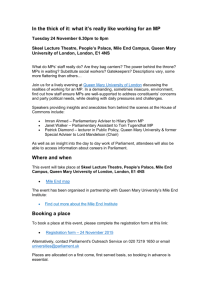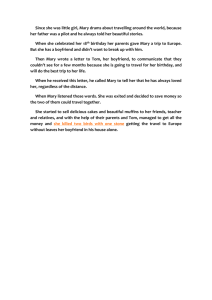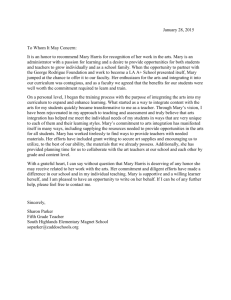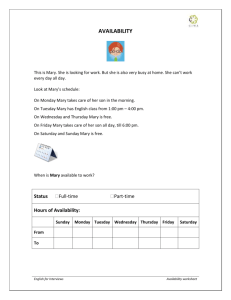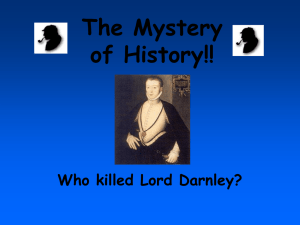position of Britain after 1815
advertisement
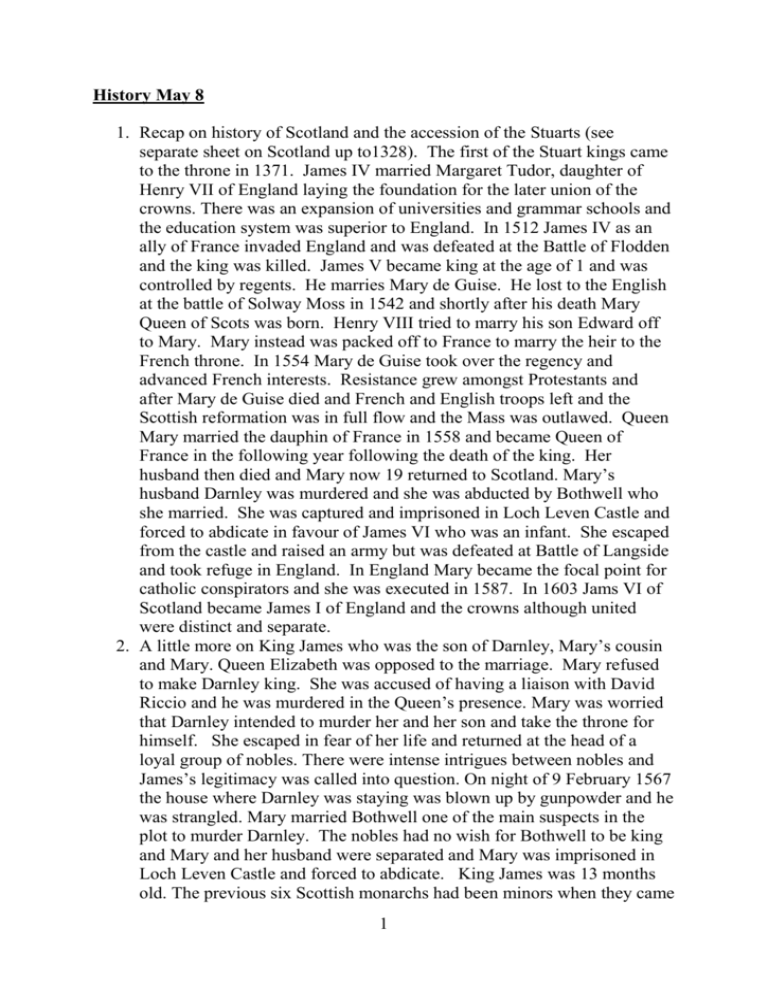
History May 8 1. Recap on history of Scotland and the accession of the Stuarts (see separate sheet on Scotland up to1328). The first of the Stuart kings came to the throne in 1371. James IV married Margaret Tudor, daughter of Henry VII of England laying the foundation for the later union of the crowns. There was an expansion of universities and grammar schools and the education system was superior to England. In 1512 James IV as an ally of France invaded England and was defeated at the Battle of Flodden and the king was killed. James V became king at the age of 1 and was controlled by regents. He marries Mary de Guise. He lost to the English at the battle of Solway Moss in 1542 and shortly after his death Mary Queen of Scots was born. Henry VIII tried to marry his son Edward off to Mary. Mary instead was packed off to France to marry the heir to the French throne. In 1554 Mary de Guise took over the regency and advanced French interests. Resistance grew amongst Protestants and after Mary de Guise died and French and English troops left and the Scottish reformation was in full flow and the Mass was outlawed. Queen Mary married the dauphin of France in 1558 and became Queen of France in the following year following the death of the king. Her husband then died and Mary now 19 returned to Scotland. Mary’s husband Darnley was murdered and she was abducted by Bothwell who she married. She was captured and imprisoned in Loch Leven Castle and forced to abdicate in favour of James VI who was an infant. She escaped from the castle and raised an army but was defeated at Battle of Langside and took refuge in England. In England Mary became the focal point for catholic conspirators and she was executed in 1587. In 1603 Jams VI of Scotland became James I of England and the crowns although united were distinct and separate. 2. A little more on King James who was the son of Darnley, Mary’s cousin and Mary. Queen Elizabeth was opposed to the marriage. Mary refused to make Darnley king. She was accused of having a liaison with David Riccio and he was murdered in the Queen’s presence. Mary was worried that Darnley intended to murder her and her son and take the throne for himself. She escaped in fear of her life and returned at the head of a loyal group of nobles. There were intense intrigues between nobles and James’s legitimacy was called into question. On night of 9 February 1567 the house where Darnley was staying was blown up by gunpowder and he was strangled. Mary married Bothwell one of the main suspects in the plot to murder Darnley. The nobles had no wish for Bothwell to be king and Mary and her husband were separated and Mary was imprisoned in Loch Leven Castle and forced to abdicate. King James was 13 months old. The previous six Scottish monarchs had been minors when they came 1 to the throne, a testament to how difficult it was to remain on the throne. Scotland was a poor country with little good land and poor communications. Vast distances and poor roads made it difficult to control the country from the centre and the clan system meant that the local laird often had more power than the king. The king married Anne of |Denmark and they had 7 children 3 of which survived to adulthood. There were plots against the king’s life, but he managed to maintain control and the general level of prosperity increased. James effectively left his mother in the lurch; she had hoped to reach an association with her son, but James wanted to stay in with Elizabeth and maintain his right to the succession. James was the senior descendant of henry VII from Margaret who had married James IV of Scotland. There were other possible claimants such as Arabella Stuart and Lord Derby and the infant of Spain, but no one really contested James’s right. Cecil was his main supporter in England, but he did not let Elizabeth know. When the Queen died a string of horses was available to get the news to James within 5 days and James then made his way to London with his entourage. There were religious divisions between mainstream English, Puritans and neo-Catholics. James sided with the high Anglicans and this annoyed the Catholics and this lead to the Gunpowder Plot. Word of the plot reached Cecil and the commons was searched the conspirators were captured and dealt with severely. Some have suggested a conspiracy with Cecil in on the whole thing and Guy Fawkes set up to bring in potential collaborators. James was against tobacco smoking. He wanted an Anglo-Scottish union. This was scuppered by the English and there was no union until 1707. The English did not like the number of Scots on the payroll and thought the barrenness of Scotland would act as a brake on England. James was spendthrift and lazy. In the latter part of his reign he was in poor health. In his reign the colonies of Virginia and Massachusetts were set up and the beginnings of the British Empire can be seen in the East Indies and India. The rebellion in Ireland was crushed and the lands forfeited were to be settled by Protestants and this far from settling the problem stored up all sorts of problems for the future. His first born son Henry died and this meant that the crown would pass to the weaker hands. Princess Elizabeth married the elector Palatine a protestant in Germany and he was elected King of Bohemia in 1618 which led to the 30 Years War. 2 3. James had constant quarrels with Parliament and considered that it was there just to agree with his decisions. Parliament held the purse strings. Charles I was less intelligent than his father and as the second son was not expected to rule. He believed in the divine right to rule. He married a catholic princess and Charles had catholic sympathies and sided with the high Church party. Parliament responded by denying him money and there were military disasters against Spain that compelled him to recall parliament. The king’s adviser Buckingham was sacked and the king dissolved Parliament. The king tried to raise money and threw those into prison who would not pay. There was a row with parliament who were determined to deny the king’s prerogative and there was the Petition of Right which accorded all men habeas corpus and denied forced loans. The king refused to comply and imprisoned three members of parliament. The king raised money by selling baronetcies and managed to rule without parliament from 11 years from 1629-1640. Puritans were persecuted and many left for America. There was an attempt to force the principles of the English church on Scotland who rebelled and occupied Northumberland. In order to pay them off the Long Parliament was assembled in 1640.Parliament demanded that the king surrender his sovereignty to the state. The arrogance of parliament split the country into Royalists and Parliamentarians and the seeds of the Civil War were sown. We shall get back to the causes of the Civil War later. 3

